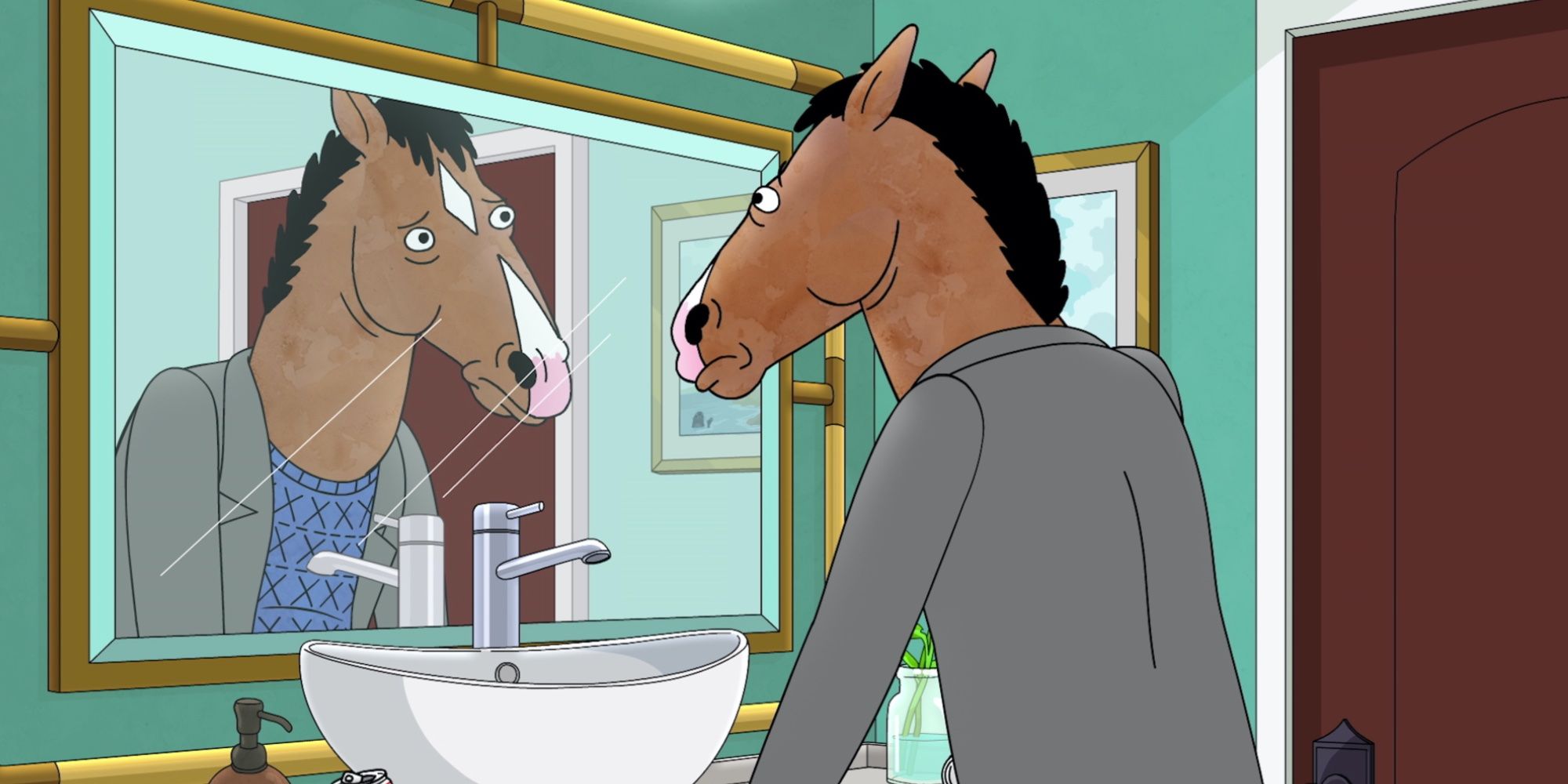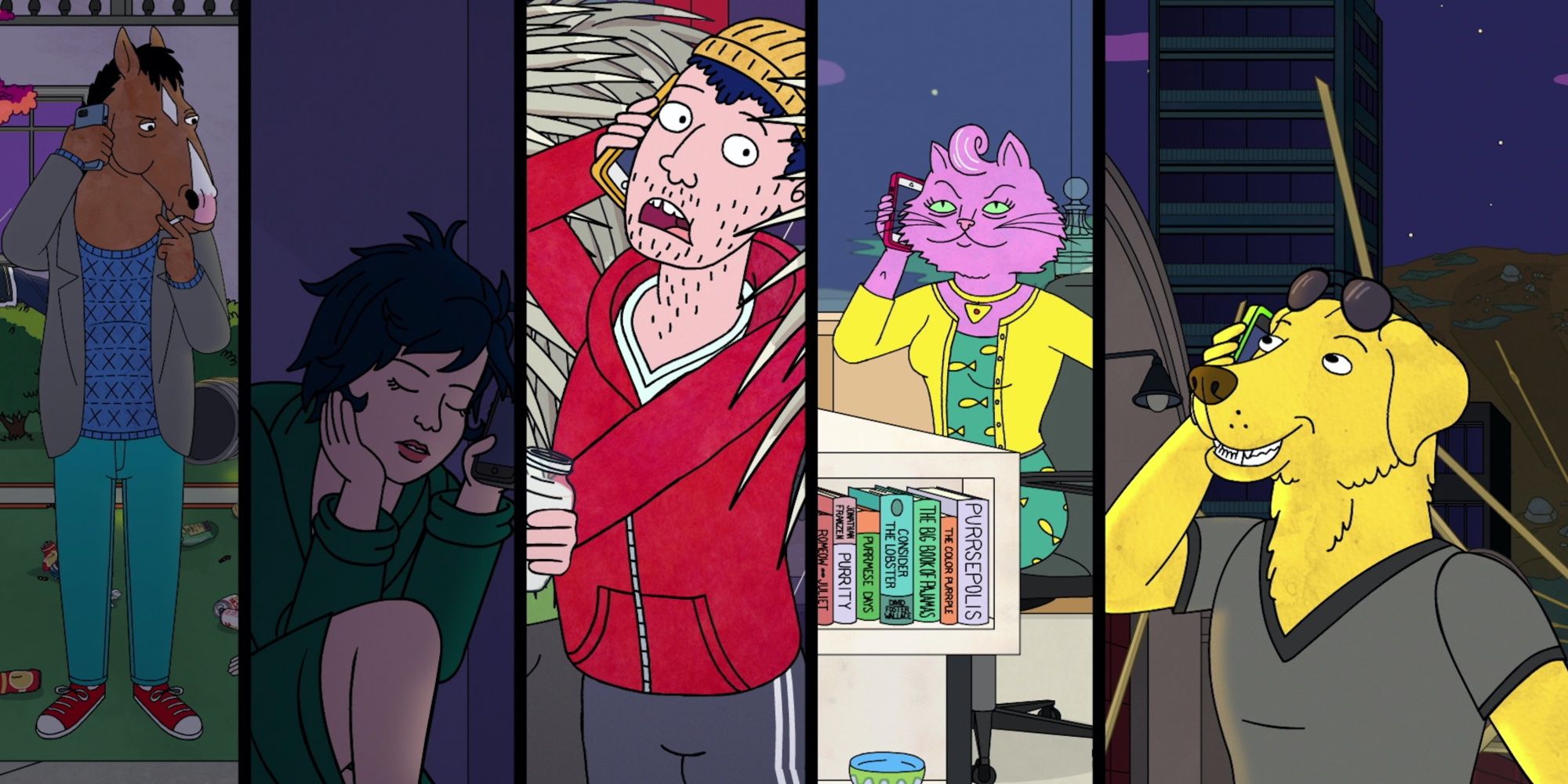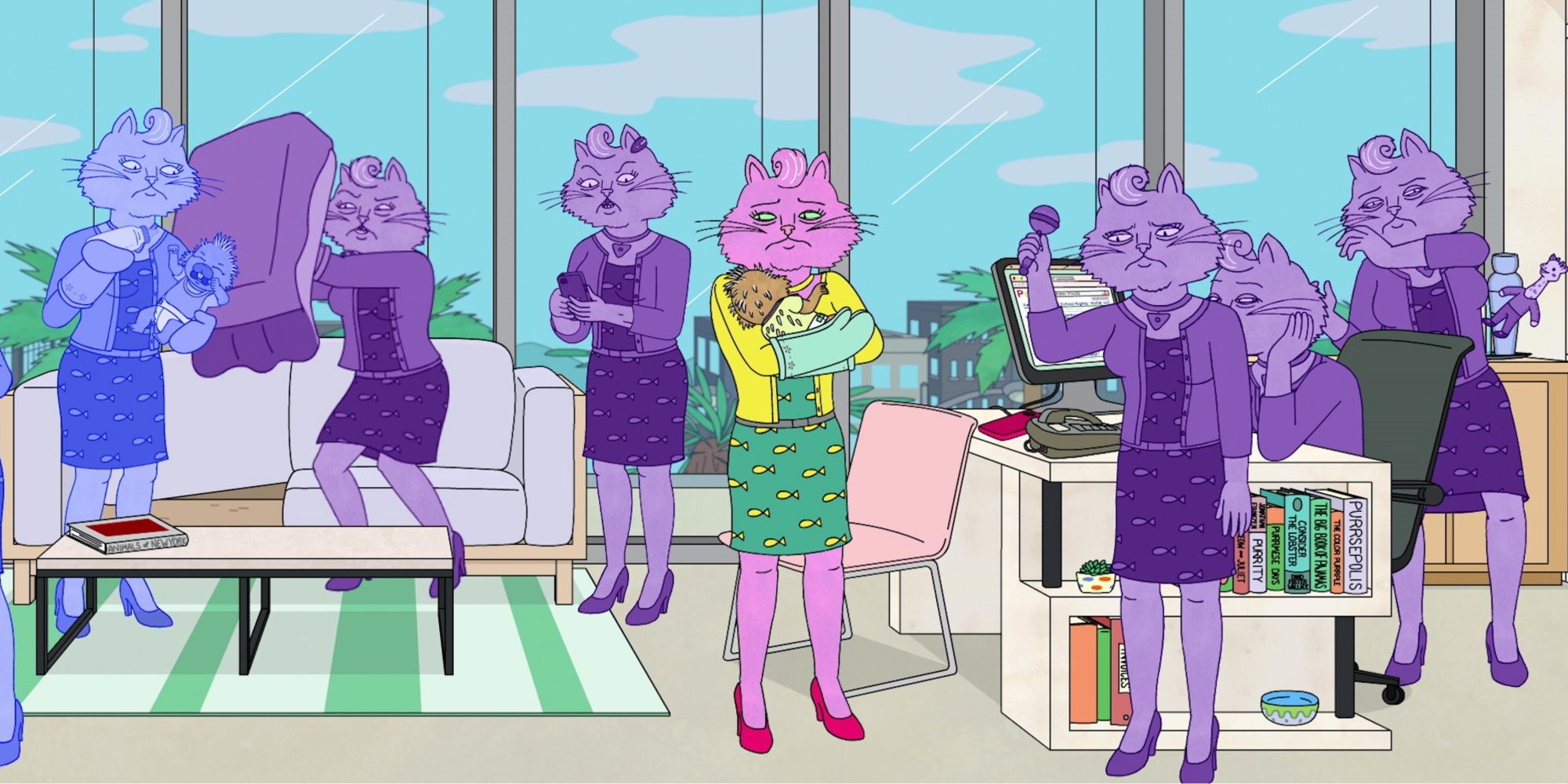
Sometimes it’s hard to believe that, considering Netflix’s tsunami-like approach to content, one of the best original programs the streaming giant has in its enormous and ever-growing library is an animated series about an alcoholic anthropomorphized horse and the strange, entertainment-obsessed, satirical world in which he resides. As such, it’s equally hard to believe that BoJack Horseman is set to bring its story full circle with an oddly spilt sixth and final season.
That BoJack season 6 consists of two eight-episode entries, one premiering in late October and the other hitting the streaming service in February 2020, smacks a bit of AMC’s still questionable decision to break the final seasons of Breaking Bad and Mad Men up into two parts. Though the time between segmented seasons was far greater than what BoJack Horseman viewers will have to endure, the choice is an odd one that complicates the final season by stunting the narrative’s emotional through-line, putting a clumsy, albeit temporary, halt to what amounts to an effecting last act for not only the series’ title character, but for the supporting characters as well.
In that regard, BoJack Horseman season 6 feels as though the end is on the minds of series creator Raphael Bob-Waksberg and his writers’ room — even if, as Aaron Paul, the voice of Todd Chavez, recently claimed, the decision to end the series was Netflix’s, not Bob-Waskberg’s. Regardless the hows and whys of the series calling it quits, the season 6 premiere, ‘A Horse Walks into a Rehab,’ establishes a strong sense of an ending from the moment go. Season 5 ended with BoJack (Will Arnett) entering rehab after hitting rock bottom with alcohol and pills, and razing a number of his relationships or generally continuing to burn bridges — professional and otherwise — everywhere he went. With the help of Diane (Alison Brie), the formerly famous horseman checks himself into a clinic, hoping for a new start.

Change can be like trying to turn an oil tanker around, and to its credit, the series takes its time in depicting BoJack’s recovery. There’s a humorous exchange between BoJack and the front desk clerk at Pastiches that sets the tone for the show’s time in rehab, one where the show’s love of clever and intricate wordplay comes to the forefront, even as it skewers the public’s fascination with celebrities in recovery and, well, the degree to which those bouts of recovery are used to maintain said celebrity’s profile among fans and in the news. But BoJack is very much yesterday’s news, which is good news for him, as he’s able to fully embrace the concept of recovery, which he does with the help of a therapy horse, Dr. Champ, played by Veep’s Sam Richardson.
Like much of the past few seasons, BoJack Horseman is largely concerned with the way BoJack continues to process Sarah Lynn’s death, his role in it, and how her struggles with substance abuse and fame mirrored his own. To send this point home, the show introduces Jameson, a young woman who’s in rehab for the fifth time, and who bares a striking resemblance — personality-wise — to the late former child star. This results in an off-campus adventure for her and BoJack, where he learns some painful truths about Jameson, highlighting certain failures in his own childhood that played a role in his turning to alcohol and other substances as a coping mechanism.
The first half of season 6 is built largely of segmented storylines, one for each of the main characters that intersect occasionally, but for the most part, Todd, Diane, Princess Carolyn (Amy Sedaris), and Mr. Peanutbutter (Paul F. Tompkins) are all on separate trajectories. This approach adds to the overwhelming sense that this is indeed the final season, but it also underlines the unfinished nature of the split season.

There are some strong and very funny moments in the first eight episodes, particularly having to do with the pressure Princess Carolyn feels about being a single mother and high-powered agent in an industry that expects women to be everything all the time and like it. Meanwhile, Diane begins a new relationship with Guy (LaKeith Stanfield), a cameraman who encourages her to move to Chicago to be with him and work on her book after Girl Croosh is bought up by a huge, Disney-like conglomerate. Issues of class and status are a constant theme throughout the first eight episodes, as a Hollywoo assistant strike brings the entertainment industry to a screeching halt and Todd must come to terms with his Latinx stepfather — a way of explaining how a white character voiced by Aaron Paul has a last name like Chavez.
It will come as no surprise, then, that although it’s a fine start to the final season, the first half of BoJack Horseman season 5 feels remarkably unfinished. Some of that is due to the note on which the eighth episode ends, some is due to the fragmented nature of the story, and some is due to the lack of any remarkable standalone episodes, like ‘Free Churo’ and ‘Fish Out of Water.’ It’s likely that Bob-Waksberg and his staff are saving the best for last, but it would have been nice to see the series begin with a bang, too.
BoJack Horseman season 6 will stream on Friday, October 25 exclusively on Netflix.
from ScreenRant - Feed https://ift.tt/2o8BBym

0 Comments